Which of these four metar reports suggests that rain is most likely in the next ? [ Revision flight ]
Question 139-1 : 23015kt 8000 bkn030 ovc070 17/14 q1009 becmg 4000 = 16002kt 0100 fg sct300 06/06 q1022 becmg 1000 = 05016g33kt 8000 ovc015 08/06 q1028 nosig = 34004kt 9999 sct040 sct100 m05/m08 q1014 nosig =
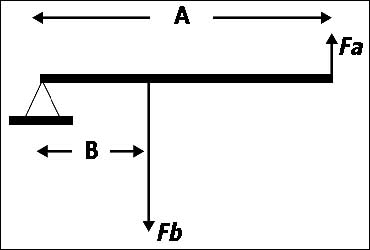 23015kt 8000 bkn030 ovc070 17/14 q1009 becmg 4000 =
23015kt 8000 bkn030 ovc070 17/14 q1009 becmg 4000 = Precipitation in the form of showers occurs from ?
Question 139-2 : Convective clouds stratified clouds cirro type clouds clouds containing only ice crystals
A super cooled droplet is ?
Question 139-3 : A droplet still in liquid state at a temperature below 0°c a water droplet that is mainly frozen a small particle of water at a temperature below 50°c a water droplet that has been frozen during its descent
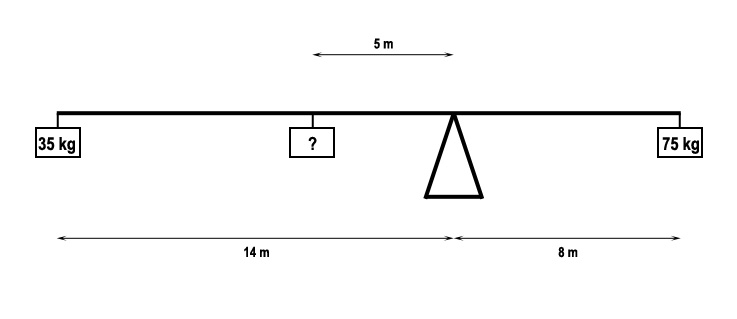 A droplet still in liquid state at a temperature below 0°c.
A droplet still in liquid state at a temperature below 0°c. Steady precipitation in contrast to showery precipitation falls from ?
Question 139-4 : Stratiform clouds with little or no turbulence convective clouds with little or no turbulence stratiform clouds with severe turbulence convective clouds with moderate turbulence
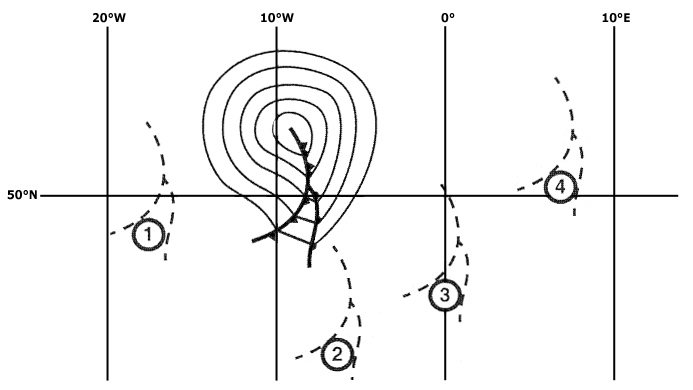 Stratiform clouds with little or no turbulence
Stratiform clouds with little or no turbulence Supercooled droplets can occur in ?
Question 139-5 : Clouds fog and precipitation clouds but not in precipitation precipitation but not in clouds clouds but not in fog
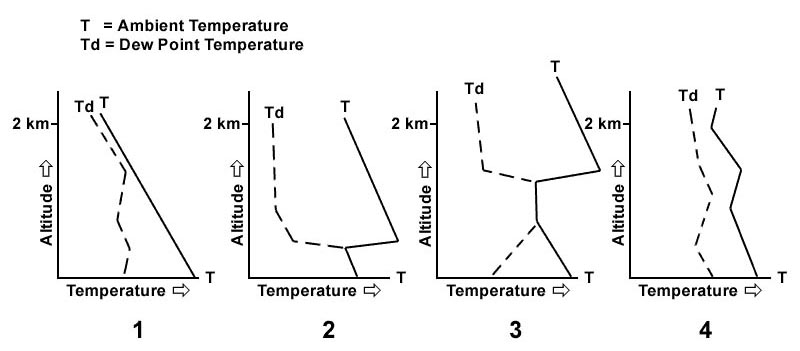 Clouds, fog and precipitation
Clouds, fog and precipitation Supercooled droplets are always ?
Question 139-6 : At a temperature below freezing small and at a temperature below freezing large and at a temperature below freezing at a temperature below 60°c
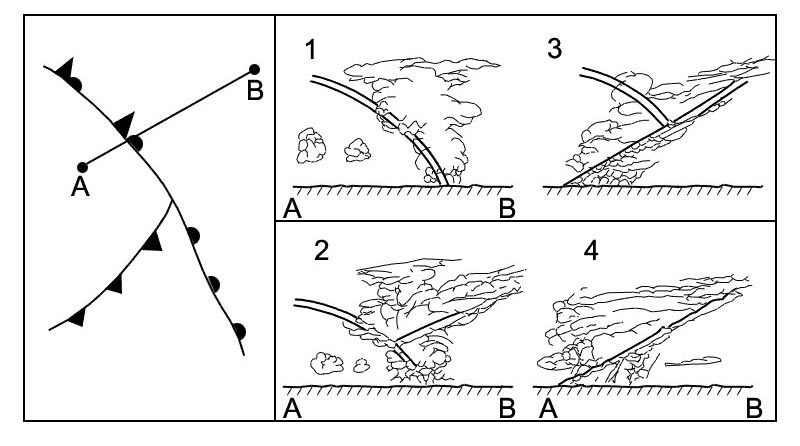 At a temperature below freezing
At a temperature below freezing The following statements deal with precipitation turbulence and icing select ?
Question 139-7 : Precipitation may be snow sleet or rain icing is probable and may range between light and severe turbulence is rarely more than moderate precipitation may be snow sleet or rain icing and turbulence are frequently severe precipitation is frequently in the form of hail icing and turbulence are frequently severe precipitation and icing are usually nil turbulence is rarely more than moderate
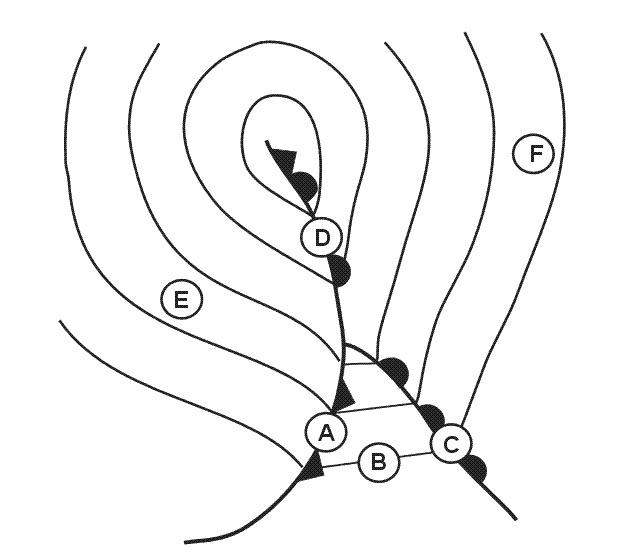 Precipitation may be snow, sleet or rain. icing is probable and may range between light and severe. turbulence is rarely more than moderate.
Precipitation may be snow, sleet or rain. icing is probable and may range between light and severe. turbulence is rarely more than moderate. From what type of cloud does drizzle fall ?
Question 139-8 : Stratus altostratus cumulus cirrostratus
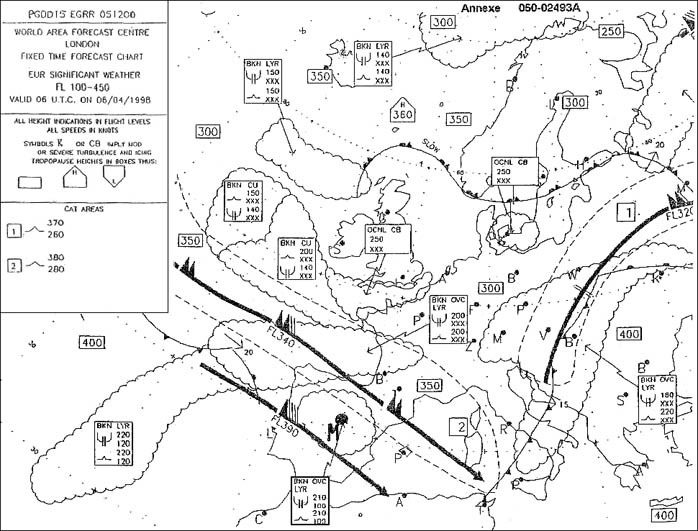 Stratus.
Stratus. What type of clouds are associated with rain showers ?
Question 139-9 : Towering cumulus and cumulonimbus towering cumulus and altostratus altostratus and stratus nimbostratus
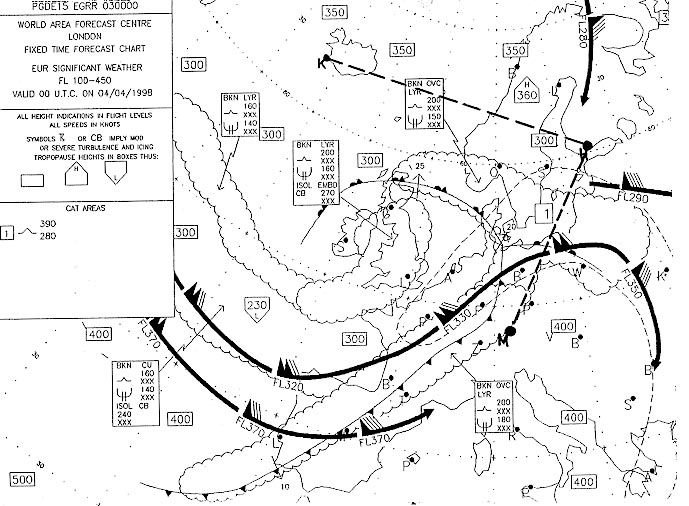 Towering cumulus and cumulonimbus.
Towering cumulus and cumulonimbus. What type of clouds are associated with snow showers ?
Question 139-10 : Cumulus and cumulonimbus cumulus and altostratus altostratus and stratus nimbostratus
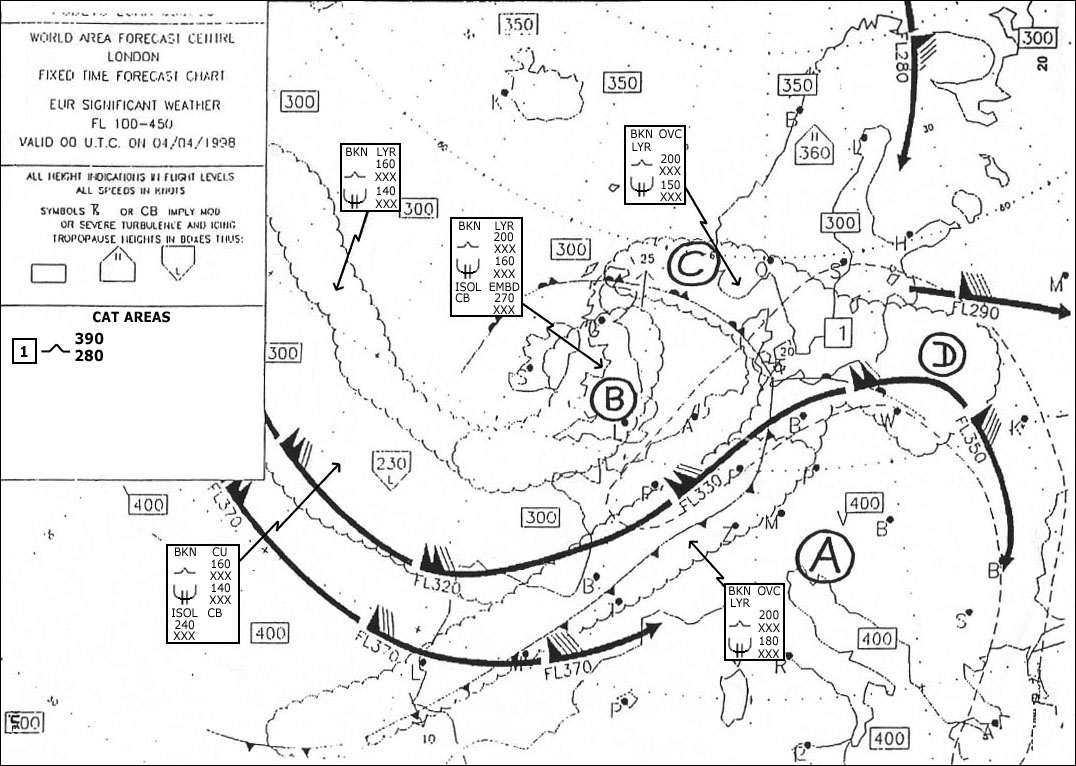 Cumulus and cumulonimbus.
Cumulus and cumulonimbus. Which of the following phenomena should be described as precipitation at the ?
Question 139-11 : Dz sa ts sq
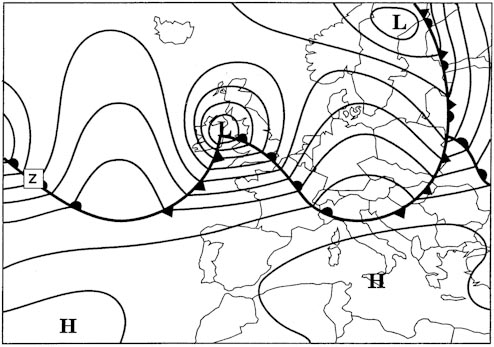 Dz
Dz Which of the following phenomena should be described as precipitation at the ?
Question 139-12 : Shsn va mifg br
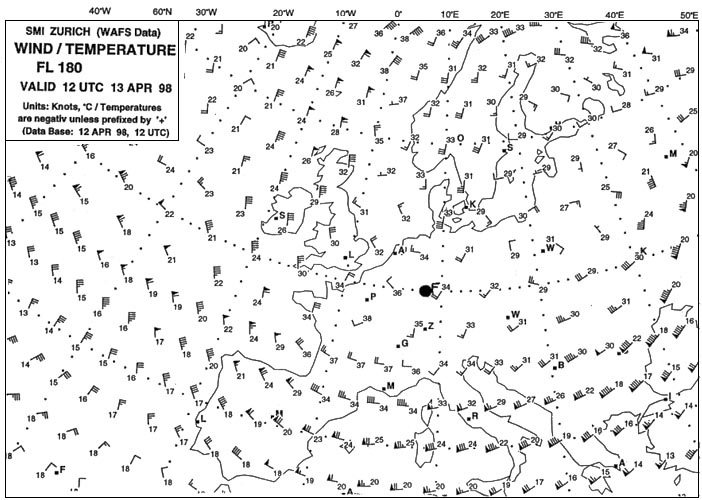 Shsn
Shsn Solid precipitation which is transparent or translucent and has a diameter of ?
Question 139-13 : Ice pellets hail snow grains small hail
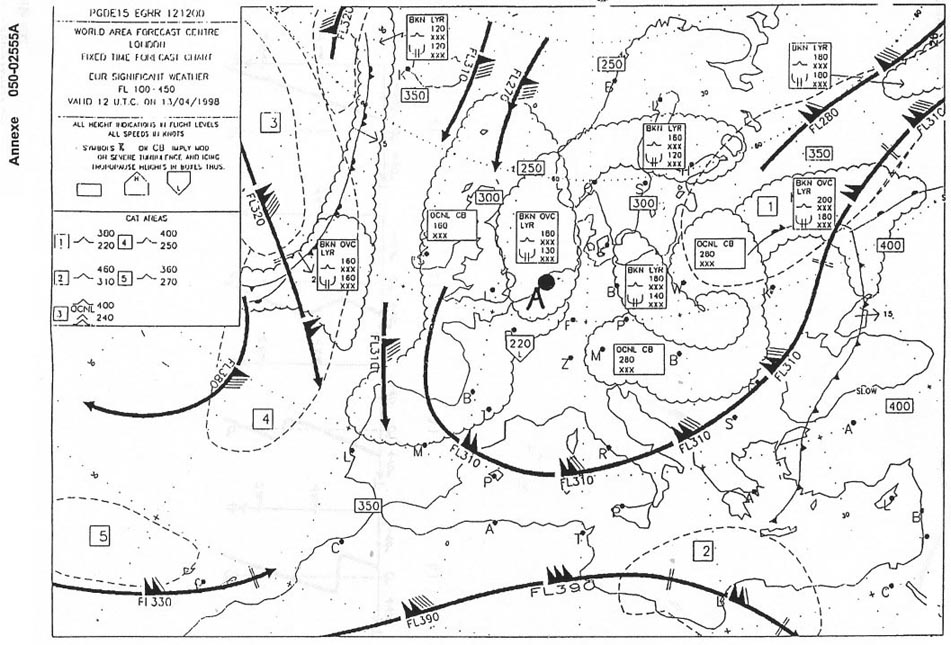 Ice pellets.
Ice pellets. During flight in clouds which of the following means is the best one to ?
Question 139-14 : Weather radar significant weather chart aircraft observations the pilot requests the position of the cbs from the atc controller
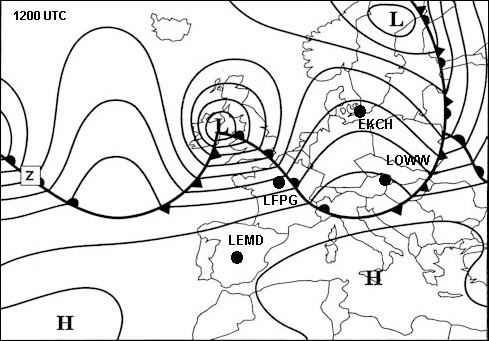 Weather radar.
Weather radar. Which of the following statements concerning airborne weather radar is correct ?
Question 139-15 : It shows on a plan position indicator the areas of precipitation of rain snow and/or hail it can also be used for proximity warning and anti collision protection the indication on the plan position indicator represents the amount mm/h of water vapour within clouds it shows the areas which are dangerous for aircraft icing the intensity levels for aircraft icing as defined by icao are indicated by contour lines
 It shows on a plan position indicator the areas of precipitation of rain, snow and/or hail.
It shows on a plan position indicator the areas of precipitation of rain, snow and/or hail. Snow grains ?
Question 139-16 : Fall from stratus or supercooled fog are normally transparent are mainly formed inside altostratus and nimbostratus are typically formed inside a cb where they are being tossed up and down while growing to such size that they could no longer be supported in the updraught
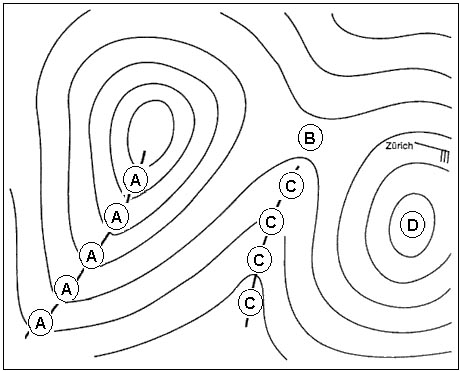 Fall from stratus or supercooled fog.
Fall from stratus or supercooled fog. Which of the following statements is true concerning the bergeron findeisen ?
Question 139-17 : It only takes place in clouds with supercooled water droplets and ice crystals it only occurs in the mid latitudes it takes place in clouds which are composed only of ice crystals it does not occur in the tropics
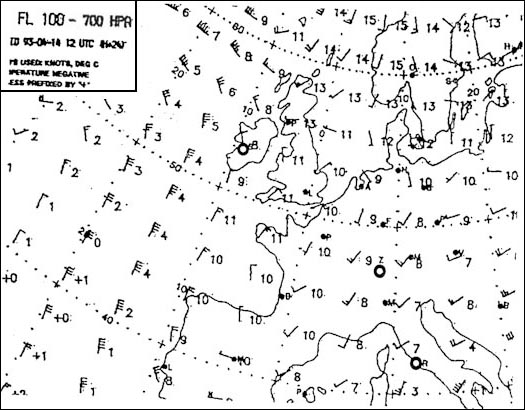 It only takes place in clouds with supercooled water droplets and ice crystals.
It only takes place in clouds with supercooled water droplets and ice crystals. Which of the following statements is true concerning the coalescence process ?
Question 139-18 : In the mid latitudes this process produces only drizzle or very light rain it only occurs in the tropics it only takes place in convective clouds it only occurs in the mid latitudes
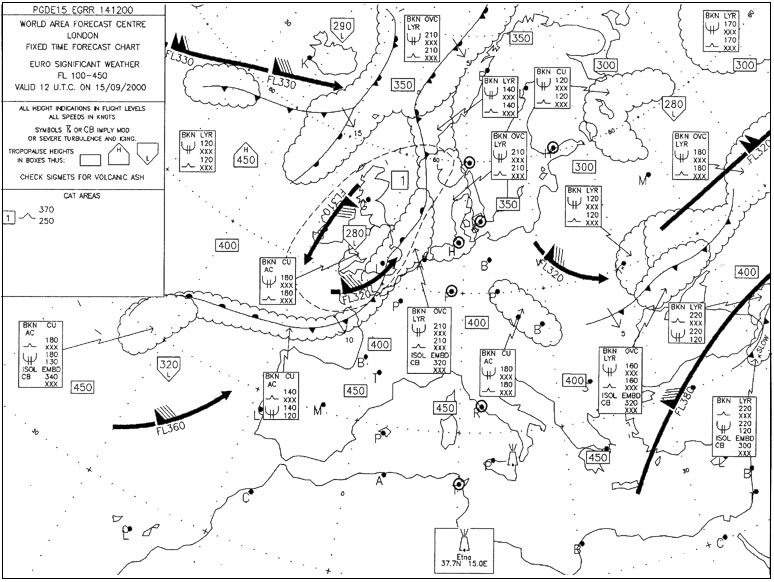 In the mid-latitudes this process produces only drizzle or very light rain.
In the mid-latitudes this process produces only drizzle or very light rain. The processes and/or effects which cause clouds to release precipitation are ?
Question 139-19 : Coalescence process and bergeron findeisen process bergeron findeisen process and convection effect convection effect and advection effect advection effect and coalescence process
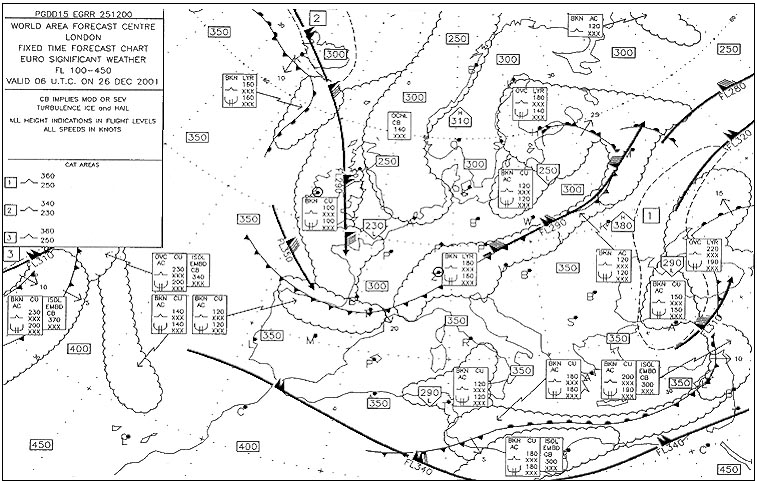 Coalescence process and bergeron-findeisen process.
Coalescence process and bergeron-findeisen process. State the code used to indicate moderate precipitation in the form of snow ?
Question 139-20 : Shsn sn +so ra+
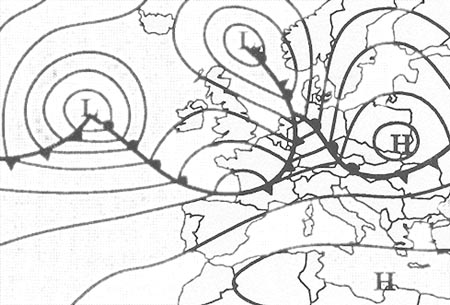 Shsn
Shsn The size of a drizzle droplet ?
Question 139-21 : Less than 0 5 mm less than 0 5 cm equal or more than 0 5 mm equal or more than 0 5 cm
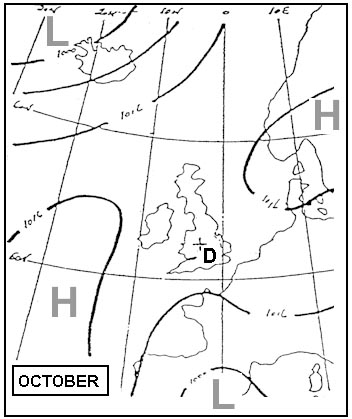 Less than 0.5 mm.
Less than 0.5 mm. The presence of ice pellets at a height of 8000 ft indicates ?
Question 139-22 : Freezing rain at heights above 8000 ft freezing rain at heights below 8000 ft snow at heights above 8000 ft hail at heights below 8000 ft
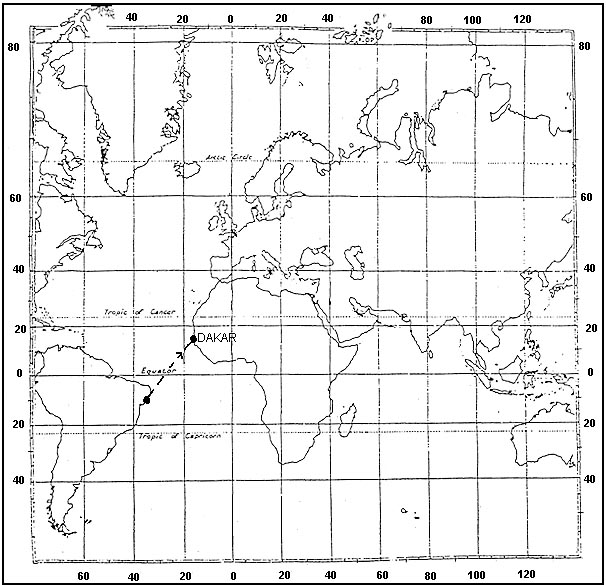 Freezing rain at heights above 8000 ft.
Freezing rain at heights above 8000 ft. The weather most likely to be experienced at position 'q' is . 414 ?
Question 139-23 : Showery with generally good visibility mainly clear skies with fog developing overnight mainly overcast skies with poor visibility thundery showers particularly at night
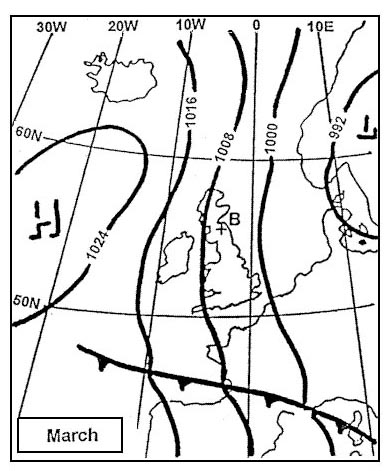 Showery with generally good visibility.
Showery with generally good visibility. Which statement best describes coalescence ?
Question 139-24 : Droplets velocity increases with their radius those who have grown faster will fall faster than others and will sweep smaller droplets droplets velocity changes with their radius smallest droplets will fall faster than others its the process in which a material changes from a frozen solid to a gas without passing through the intermediate liquid state its the process by which water vapor in the air is changed into liquid water
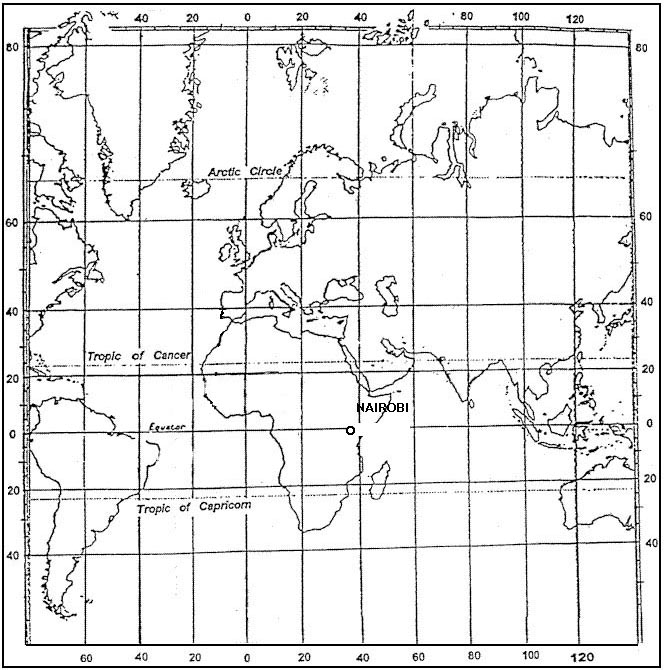 Droplets velocity increases with their radius, those who have grown faster will fall faster than others and will sweep smaller droplets.
Droplets velocity increases with their radius, those who have grown faster will fall faster than others and will sweep smaller droplets. Which of the following is typical for the passage of an active cold front in ?
Question 139-25 : Mainly towering clouds mainly layered clouds rapid drop in pressure once the front has passed rapid increase in temperature once the front has passed
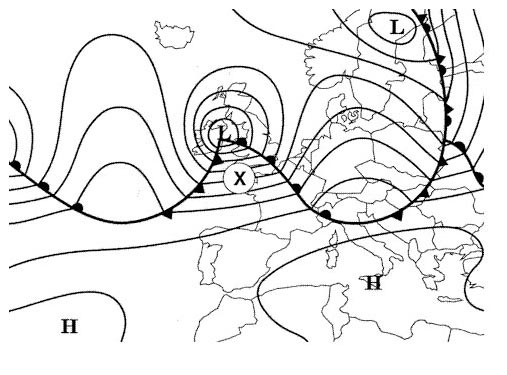 Mainly towering clouds.
Mainly towering clouds. Examining the pictures on which one of the tracks dashed lines is this cross ?
Question 139-26 : Track b d track b c track a d track a e
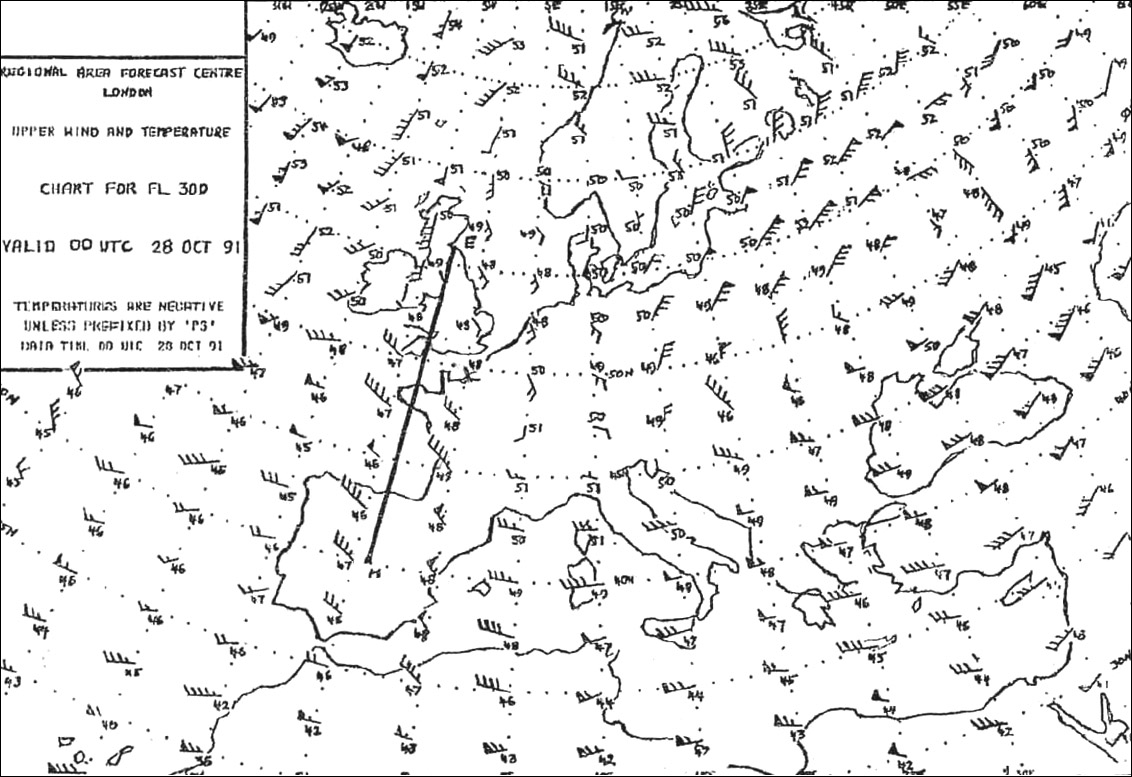 Track b-d.
Track b-d. Frontal depressions can be assumed to move in the direction of the 2000 feet ?
Question 139-27 : In the warm sector in front of the warm front behind the cold front at the apex of the wave
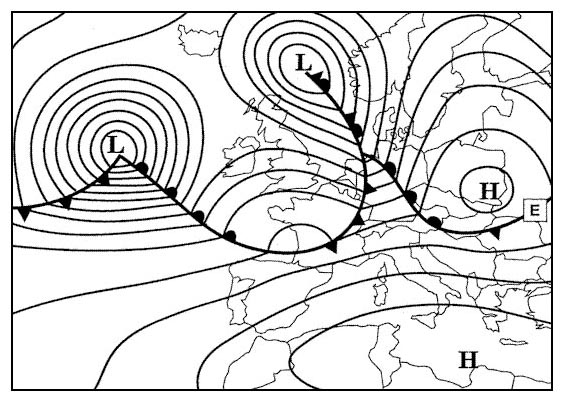 In the warm sector.
In the warm sector. What types of cloud will you meet flying towards a warm front ?
Question 139-28 : At some 800 km cs later as and at some 300 km ns until the front extensive areas of fog at some 100 km from the front ns begin at some 500 km as later cs and at some 80 km before the front cb at some 500 km from the front groups of cb later at some 250 km thickening as
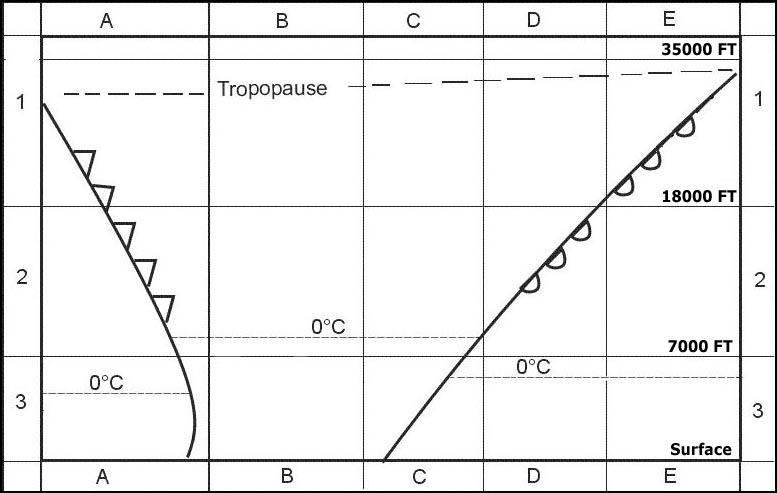 At some 800 km cs, later as, and at some 300 km ns until the front.
At some 800 km cs, later as, and at some 300 km ns until the front. The polar front is ?
Question 139-29 : The boundary between polar and tropical air masses the boundary between arctic and tropical air masses the boundary between arctic and polar air masses the constant frontal activity situated at about 80 degrees north and south
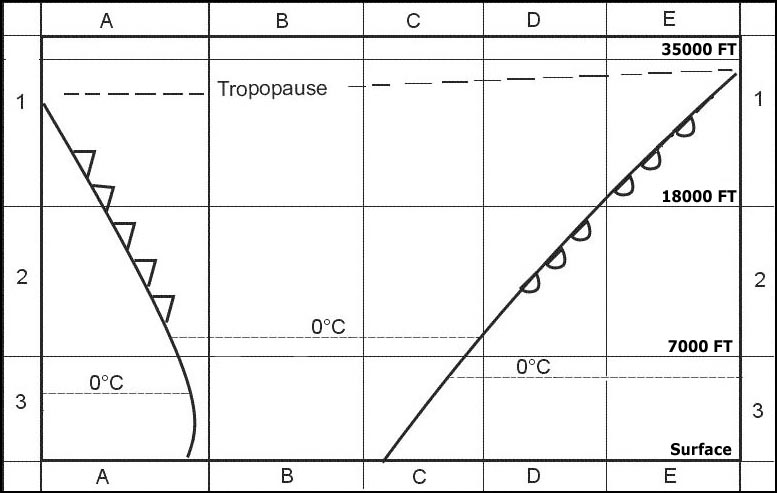 The boundary between polar and tropical air masses.
The boundary between polar and tropical air masses. What are the typical differences with regard to the temperature and humidity ?
Question 139-30 : The air of the azores is warmer and more humid than the north russian air the north russian air is colder and more humid than the air of the azores the air of the azores is warmer and dryer than the north russian air the north russian air is warmer and dryer than the air of the azores
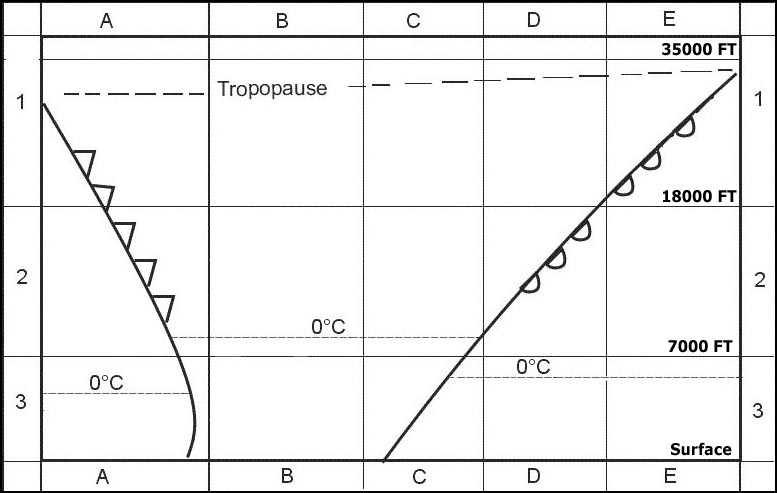 The air of the azores is warmer and more humid than the north-russian air.
The air of the azores is warmer and more humid than the north-russian air. Where is the source of continental tropical air that affects europe in summer ?
Question 139-31 : The southern balkan region and the near east southern italy southern france the azores region
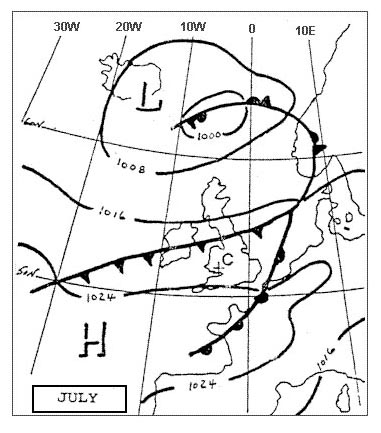 The southern balkan region and the near east.
The southern balkan region and the near east. Where does polar continental air originate ?
Question 139-32 : Siberian landmass polar ice cap the region of the azores the region of the british isles
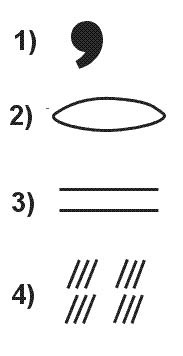 Siberian landmass.
Siberian landmass. What type of fronts are most likely to be present during the winter in central ?
Question 139-33 : Warm fronts warm occlusions cold occlusions high level cold fronts cold fronts
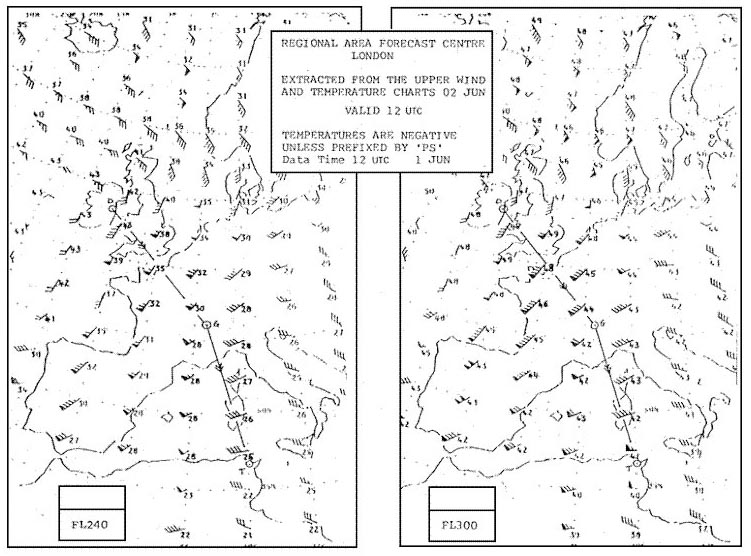 Warm fronts, warm occlusions.
Warm fronts, warm occlusions. Which of the following conditions are you most likely to encounter when ?
Question 139-34 : Low cloud base and poor visibility severe thunderstorms at low altitude extreme turbulence and severe lightning striking the ground high cloud base good surface visibility and isolated thunderstorms
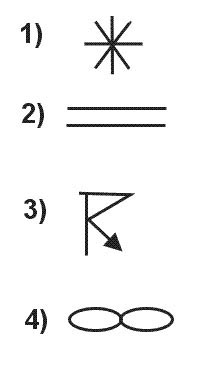 Low cloud base and poor visibility.
Low cloud base and poor visibility. During a cross country flight at fl 50 you observe the following sequence of ?
Question 139-35 : Decreasing temperatures a strong downdraught increasing temperatures strong gusty winds
 Decreasing temperatures.
Decreasing temperatures. What cloud formation is most likely to occur at low levels when a warm air mass ?
Question 139-36 : Nimbostratus cumulus altostratus cumulonimbus
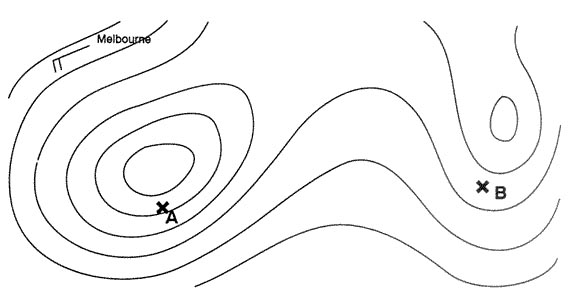 Nimbostratus.
Nimbostratus. The approximate inclined plane of a warm front is ?
Question 139-37 : Is 1/150 is 1/50 is 1/300 is 1/500
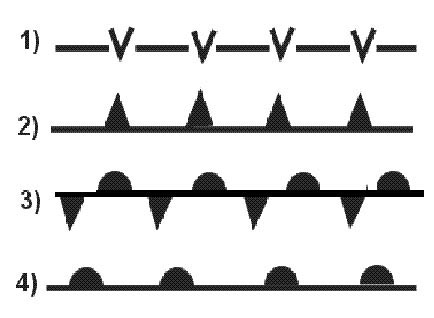 Is 1/150.
Is 1/150. What type of low pressure area is associated with a surface front ?
Question 139-38 : Polar front low a cold air pool a low on lee side of a mountain heat low
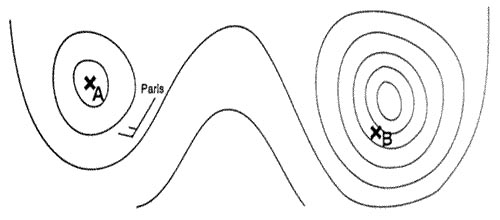 Polar front low.
Polar front low. In which approximate direction does the centre of a non occluded frontal ?
Question 139-39 : In the direction of the warm sector isobars in the direction of the isobars ahead of the warm front in the direction of the sharpest pressure increase in the direction of the isobars behind the cold front
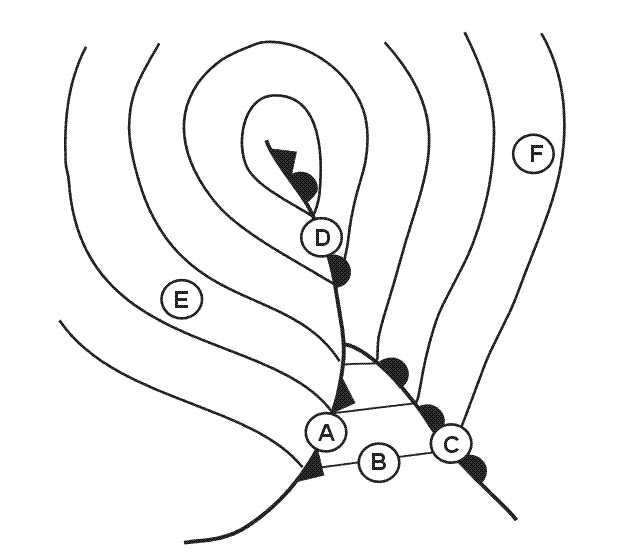 In the direction of the warm sector isobars.
In the direction of the warm sector isobars. Where is the coldest air to be found in an occlusion with cold front ?
Question 139-40 : Behind the front ahead of the front at the surface position of the front at the junction of the occlusion
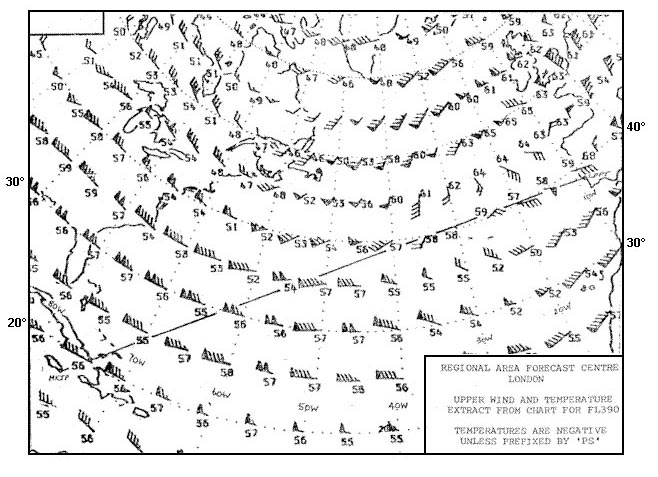 Behind the front.
Behind the front. ~
Exclusive rights reserved. Reproduction prohibited under penalty of prosecution.
5519 Free Training Exam
